In response to Bridget Riley's exhibition at David Zwirner, we look at the use of stripes in art
Bridget Riley is synonymous with the stripe; a fact which is currently being celebrated in a show at the David Zwirner Gallery dedicated to her mastery of the line. This exhibition, Riley’s first in London for more than a decade, is a reminder of how great an artist she is. A pioneer of op art in the 60s, she has dedicated the best part of her career to the exploration of pure colour and form and there is perhaps no other living artist who is capable of creating canvases of such vibrancy and life out of simple geometric shapes.
Since she first made use of the device in 1967, Riley’s primary compositional unit has been the humble stripe. Her canvases derive their power from the way in which Riley is able to create subtle variations on this simple theme. By altering the width and colour of her stripes, often with infinitesimal slightness, Riley is able to create arrangements that pulsate with a serene kind of rhythm.
Here we’ve collected a few other artists who use stripes in their work.

Paul Klee
Klee's stripe paintings reflect his deep interest in theories of form and colour in art. Klee is widely praised for his ability to explore formalism without sacrificing a deeply personal, idiosyncratic style, and these stripes, for all their geometric precision, retain the sense of childlike glee that inflects all his work.
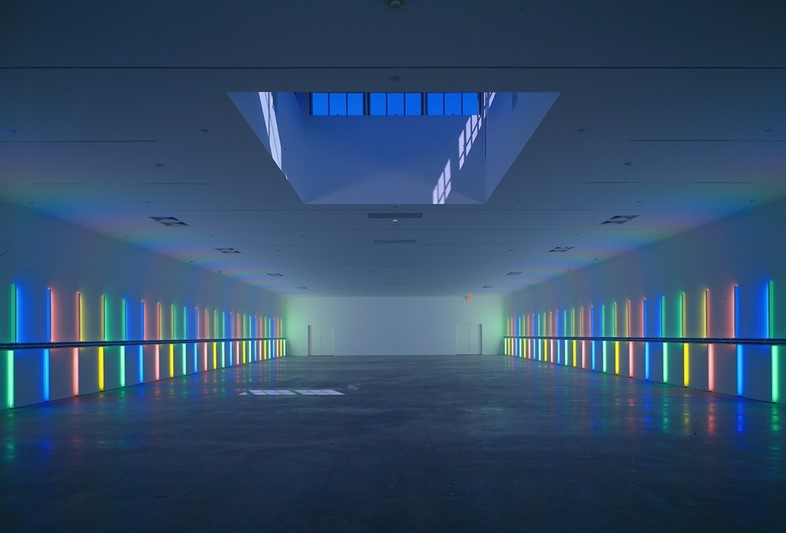
Dan Flavin
Flavin is most famous for his minimalist light arrangements that, in their use of neon, evoke the garishness and noise of American capitalism, but just as soon calm it with their zen simplicity. Between the ages of 14 and 18, Flavin studied to become a Catholic priest, and there's something religious about the serenity of these pieces.
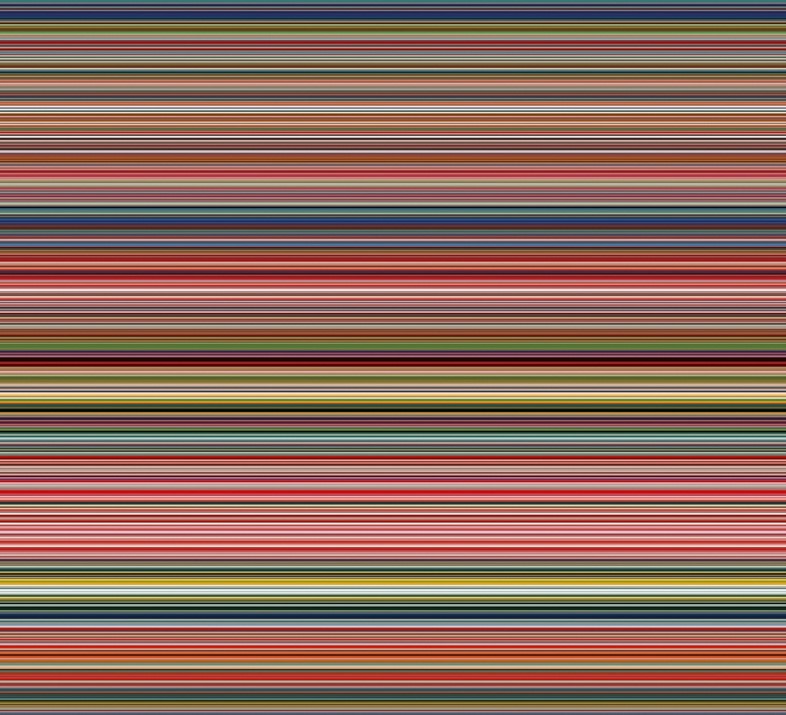
Gerhard Richter
The exhibition in which Richter introduced his stripe works was ironically titled Painting 2012, ironic because there was not a single painting in it. Instead, Richter fed digital photographs of his '90s 'scrape' paintings through his computer, and deconstructed them using software to form these light speed blurs.
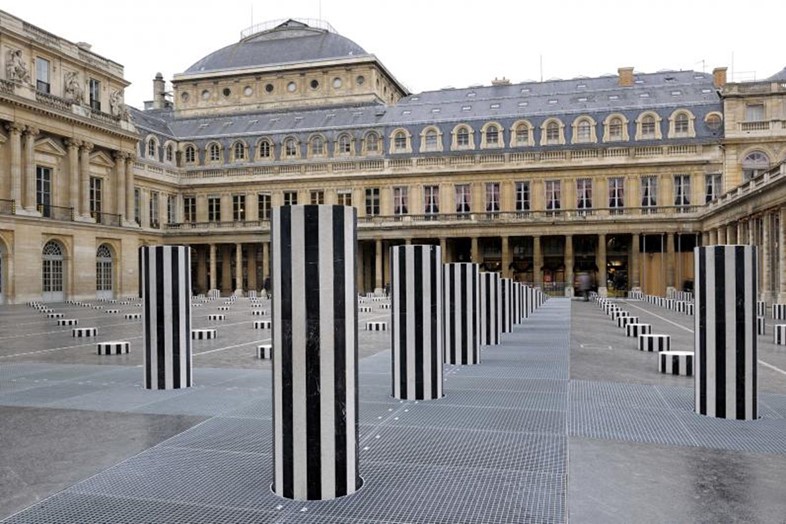
Daniel Buren
Riley uses variations in her stripes' width to create dizzying visual effects. By contrast, Buren has been using the same 8.7cm wide stripes more or less exclusively since he produced his first stripe painting in the '60s. As a consequence his stripes are instantly recognisable and city governments around the world have exploited their public currency by using them to adorn their municipal buildings, trains stations and public streets. Whilst Riley's stripes express infinite variety, Buren uses them as a tool for iconic repetition.
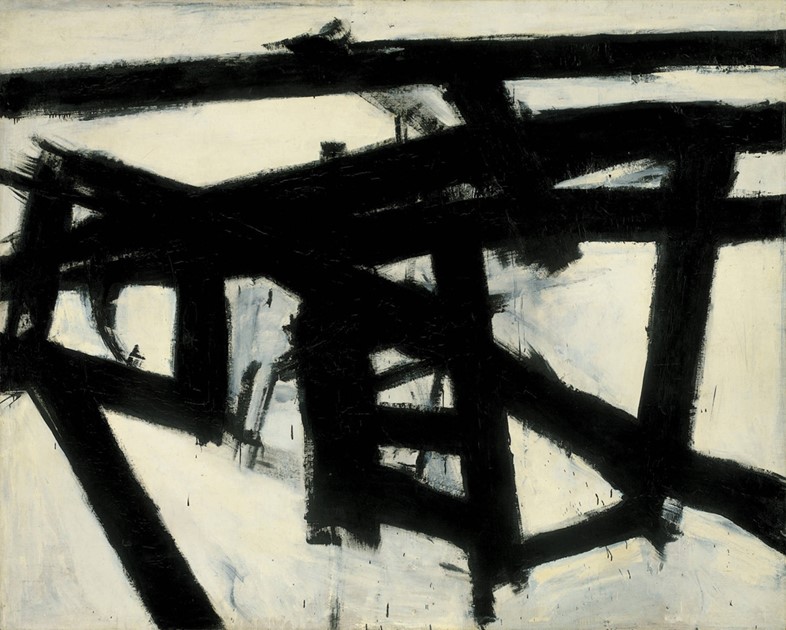
Franz Kline
A prominent abstract expressionist in the '50s, Kline believed that the ultimate test of a painting's quality is whether or not it conveys the painter's emotions. It's difficult to know what he might have thought of Riley's work – the placidity and coolness of her stripes might well, after all, offer a window onto her soul – but what's for sure is that Kline's stripes carry a quite different emotional weight. Whilst Riley's stripes are bright and delicate, Kline's are dark and intense; whilst Riley arranges hers with mathematical precision, Kline splays his across the canvas with violence and aggression.
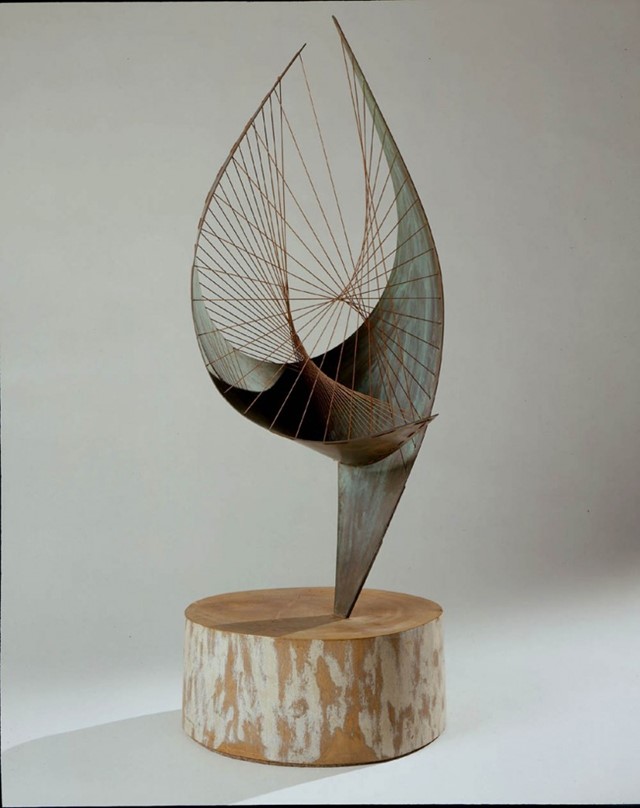
Barbara Hepworth
Hepworth's sculptures are often knitted together by angular arrangements of wire and the sharpness of these wire stripes contrasts with her sculptures' organic forms. Whilst Riley's compositions play stripes against stripes, Hepworth blends stripes with other shapes in order to create suggestive formal contrasts.
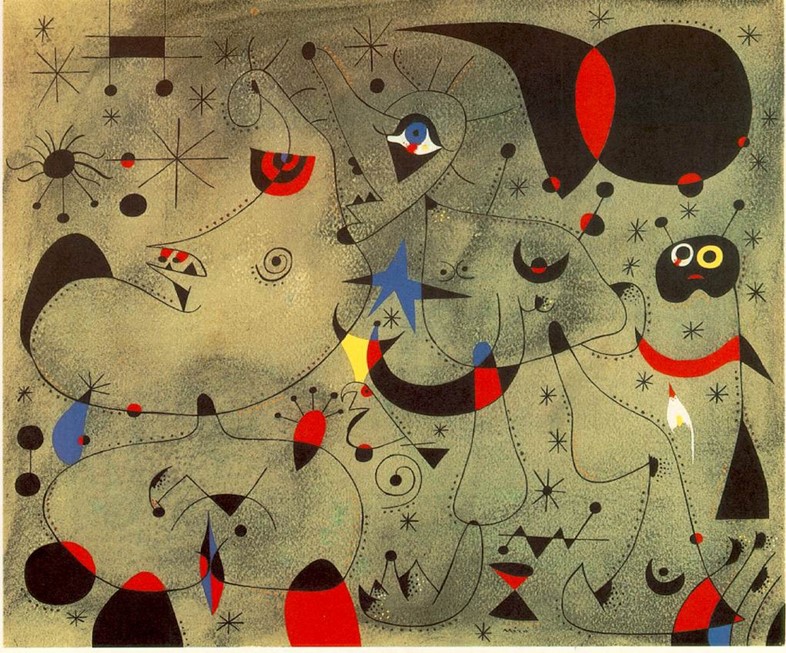
Juan Miró
Whilst Miró doesn't use stripes as such, he is a master of the line. The undulating swoops of his black lines set his canvases in motion, whilst at the same time providing a sense of formal unity by tracing lines between the free floating shapes.
Bridget Riley: The Stripe Paintings 1961-2014 is at David Zwirner London until July 25.
Text by Max Fletcher
